From a map, the Isle of Sri Lanka is like a small
piece of leaf-like gem cuddled beneath the Indian subcontinent.
Separated from the mainland by the shallow waters of the Palk Strait, it
is home of innumerable temples and massive architectural monuments; a
land matted by verdant scenery and lush foliage; and a place where the
first rays of sunlight never fail to augur the daily dissipation of the
evening mist. Sprawled across the Indian Ocean like jetsam buoyed up by
the sea, the contours and geography have both been likened to a new
picked pear and to a piece of tobacco leaf.
Yet, for all its beauty and magnificence, Sri Lanka
is a place bath in tears. Because for the past several years since its
independence, the country has been the scene of ethnic turmoil and civil
strife, of dreadful days and sleepless nights. For decades, its lush
earth has grown accustomed to the sound of gunfire and the stench of
rotting flesh, to the burst of mortar and the staccato of armalite.
Hidden behind its forests' enclaves, a dozen or so armed groups lie in
wait, ready to strike at the slightest provocation and ready to leave
behind trails of blood and gore.
thus, despite its diminutive size, the country has
gained international disrepute for having the largest number of reported
"disappearances" and accompanied by an unending cycle of violence.
A Tragedy Waiting to Unfold
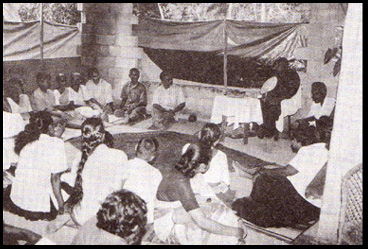
Ironically, its present political situation
demonstrates Sri Lanka's long tradition of formal democratic rule. Since
its independence in1948, elections have been dominated by two rival
political parties: the United National Party (UNP) and the Sri Lankan
Freedom Party (SLFP).
While violence has always been a permanent fixture in
Sri Lankan politics, things blew out of proportion in 1971 when the
Marxist-inspired Janatha Vimukthi Peramuna (JVP / People's
Liberation Front) launched an armed insurrection against the government
of Prime Minister Sirimawo Bandaranaike which came to power the previous
year. Despite support from young segments of the Sinhala ethnic group in
the south, the rebellion was later crushed by governemt forces. In the
resulting crackdown, 18,000 people were reported to have been killed and
disappeared, presumably on government orders. Others, including
thousands of sympathizers, were arrested and given harsh prison terms.
This ensuing reaction marked the beginning of the "culture of
disappearance" from which the country has not fully recovered.
For six years, the JVP remained underground until
1977, when UNP won the elections. under its new Prime Minister Junius
Richard Jayewardene, the government ordered the release of the remaining
JVP prisoners including its leader Rohana Wijeweera. As a result, the
JVP then began to get involved in open politics, fielding candidates in
elections on the basis of Sinhala nationalism. It found adherents not
only among the youth and university students but also among Buddhist
monks and even a few military officers fighting against separatist
insurgents in the north. It even joined the 1982 presidential elections,
with Rohana Wijeweera gaining four percent (4%) of the total votes cast.
Events, however, turned for the worse when a new
round of communal violence broke out in 1983, between the majority
Sinhala and the minority Tamils in the northeast. Known as "Black July",
the event was triggered by the killing of 13 Sinhala army personnel in
the north by Tamil militants resulting in retaliatory moves by the
Sinhalese.
To prevent further destabilization, the government
declared a State of Emergency and banned several groups critical of the
government, including three leftist parties - the Communist Party, the
Nava Sama Samaja Pakshaya (NSSP / New Socialist Party) and the
JVP. During this period, the Emergency Regulations (ERs) came into
force, granting security personnel wide authority to arrest and detain
perceived enemies of the State without being charged or tried for long
period of time.
Forced once again to go under ground, the JVP began
preparations for another armed rebellion against the government. In
1988, it called on the electorate to boycott the provincial council
elections scheduled for the 19th of December of the same year and
organized anti-government demonstrations in the south.
There was a temporary respite when the elected
president, Ranasinghe Premadasa of the UNP, lifted the State of
Emergency in January 1989. The JVP, however, continued its armed
resistance, calling on strikes and mounting assassination campaigns
against government officials. Faced by the growing intransigence of the
JVP, Premadasa re-imposed Emergency Regulations on June 20, 1989 and has
not been rescinded ever since.
By the following August, a massive anit-JVP campaign
was launched to finally crush the looming insurgency. Dubbed as
"Operation Combine", the campaign involved the entire military and
police establishments and was placed under the command of the Army Chief
of Staff. In November 1989, the government announced the arrest and
subsequent death of Rohana Wijeweera and several other JVP leaders after
military operations in Ulapana. Suspicions of liquidation and "foul
play" however soon emerged after is was discovered that the bodies were
immediately cremated "under conditions of maximum security" before any
inquest or post-mortem examinations could be held. Rumors have it that
the JVP chief was not killed in armed skirmish with security personnel
but was shot in Colombo where he was taken while still in government
custody.
Following Wijeweera's death, the remianing JVP
Politburo members fell in government hands by January of 1990.
Mopping-up operations however continued throughout the entire year,
allowing both military and paramilitary forces to arrest, detain and
execute real and imagined members of the JVP.
As a result of the reprisal, about 60,000 have
mysteriously disappeared within the two year period of 1989-1990,
according to Amnesty International. Unofficial reports however indicate
that close to 100,000 had been abducted and disappeared, most of whom
being secondary or university students suspected of having links with
JVP. Buddhist monks were also victimized and in some instances, in lieu
of the suspects' relatives, were arrested.
Tigers on the Prowl
But before the the government could even neutralize
the JVP, trouble was already brewing in the northeast. Fuelled by
Sinhala discrimination and ethnic resentment, skirmishes occurred
between minority Tamils and security personnel starting in the
mid-1950s. The attacks became more frequent by 1977 until it became a
full-scale war after the communal riots of 1983.
The root of the problem dates back to the time of
independence when in 1948, the new republic inherited the Soulbury
Constitution from the British. The Charter's provision for a highly
centralized and unitary state was later reaffirmed in the Republic
Constitution of 1972 and in the amendments of 1978 which introduced a
president as chief executive. Further animosity was created when then
Prime Minister S.W.R.D. Bandaranaike made Sinhalese the national
language.
By this time, agitated Tamil intellectuals began
demanding for greater autonomy and wider political authority, leading to
the formation of the Tamil United Liberation Front (TULF). In its First
National Conference in 1976, the TULF demanded the creation of a
separate Tamil State called "Tamil Eelam", identifying the Northern and
Eastern Provinces as their traditional "homeland". Hoping to attain
their goals through legal and non-violent means, their expectations were
soon dashed when the Liberation Tigers of Tamil Eelam (LTTE) began
attacking police installations in 1978.
To prevent the spread of the separatist rebellion,
the central government enacted the Prevention of Terrorism Act (PTA) in
1979, effectively eliminating judicial checks on law enforcement.
Intended to be enforced upon the troubled areas for a period of one
year, the PTA became a permanent law through an amendment introduced in
1982. The authorities also expanded their scope throughout the entire
island, resulting in more human rights violations.
But instead of emasculating the armed uprising,
government repression merely galvanized Tamil resistance even more. in
the following years, other Tamil separatist groups were formed,
determined to wrest independence from Sri Lanka by force.
Uncanny Twist
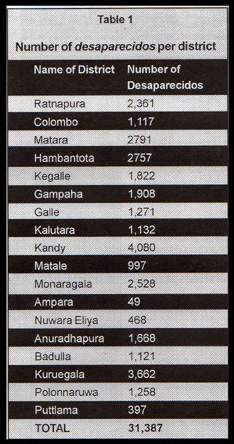 Bled dry by protracted guerilla campaign, the
government of Sri Lanka sought the assistance of India then under the
leadership of Prime Minister Rajiv Gandhi. In July 198, the
Indo-Sri Lanka Accord took effect, allowing the entry of Indian troops
to take charge of security in the northeast. Labeled as the Indian
Peace-Keeping Force (IPKF), they were specifically created to disarm the
militants and end the military stalemate.
Bled dry by protracted guerilla campaign, the
government of Sri Lanka sought the assistance of India then under the
leadership of Prime Minister Rajiv Gandhi. In July 198, the
Indo-Sri Lanka Accord took effect, allowing the entry of Indian troops
to take charge of security in the northeast. Labeled as the Indian
Peace-Keeping Force (IPKF), they were specifically created to disarm the
militants and end the military stalemate.
Aside from this measure, other conciliatory gestures
were also made. As provided in the Accord, elections were scheduled for
1988 to elect officers to an island-wide Provincial Council system with
considerable administrative powers as well as extending general amnesty
to all political prisoners arrested under the PTA and similar emergency
laws.
Enticing as it may seem, the Accord suffered from one
fundamental defect: Tamils, who were the ones primarily affected by the
war, were not party to the agreement. Hence, LTTE violence continued,
and the rebels called for a boycott of the provincial council elections.
In the aftermath of the elections, the militant Eelam
People's Revolutionary Liberation Front (EPRLF) gained control of
most of the provincial councils in the northeast. Allying itself with
the IPKF, the EPRLF began to launch counteroffensive operations against
the rival LTTE.
Renewed Violence
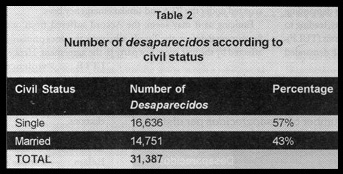
Unable to break the back of the insurgency and burdened by the internal
affairs of another country, India withdrew its troops form the island in
March 1990, but not before it could prevent another series of clashes
between the LTTE and the Tamil National Army (TNA), a new armed
formation created through the combined elements of the EPRLF and other
pro-India forces. In June of the same year, the central government in
Colombo began mobilizing its forces, sending regular troops to the
troubled regions in the north. By mid-1990 however, Jaffna fell under
LTTE control and would remain in its hand until late 1995, after
yielding to massive counter-assaults by the Army.
The Tigers, however, remained unfazed. Placed on the
defensive, they launched a series of assassinations and bombing attempts
in the urban centers, targeting politicians and security officials,
usually carried out by crack suicide squads. In 1993, the LTTE
assassinated President Premadasa. They also killed Indian Minister Rajiv
Gandhi for his role in the Indo-Sri Lanka Accord. In 1999, a suicide
bomber blew a political rally by the People's Alliance injuring re-electionist
President Chandrika Bandaranaike Kumaratunga.
Last year, the Tigers made another attempt to regain
their former stronghold, forcing the government to withdraw its troops
situated in the Elephant Pass. In retaliation, the government suspended
the region's development aid for three months and banned the acquisition
of imported arms.
In the ensuing conflict, over 1,500 Tamil civilians
have already "disappeared". In 1995 alone, 55 cases were reported. In
1996, about 500 people have mysteriously "disappeared", and the
following year, 100 cases were documented, mostly coming from Jaffna,
Batticaloa, Mannar and Kilinochchi.
Enter the People's Alliance
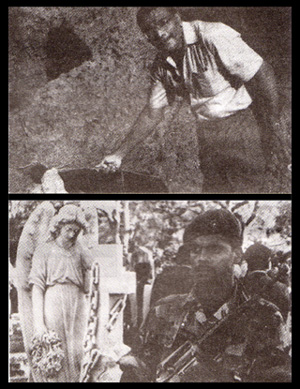 In August 1994, the People's Alliance (PA), a
coalition of parties under the SRFP, won the parliamentary elections
that ended the UNP's 17-year grip on power. Winning 105 of the total 225
seats, the PA forged an alliance with the Sri Lankan Muslim Congress and
other opposition parties enabling them to muster a majority of 113 seats
as opposed to the UNP's 94. In the presidential elections the following
November, PA leader Chandrika Bandaranaike Kumaratunga was elected as
the country's new Chief Executive.
In August 1994, the People's Alliance (PA), a
coalition of parties under the SRFP, won the parliamentary elections
that ended the UNP's 17-year grip on power. Winning 105 of the total 225
seats, the PA forged an alliance with the Sri Lankan Muslim Congress and
other opposition parties enabling them to muster a majority of 113 seats
as opposed to the UNP's 94. In the presidential elections the following
November, PA leader Chandrika Bandaranaike Kumaratunga was elected as
the country's new Chief Executive.
After being sworn into office, the President
manifested her intention to seek a peaceful solution to the ethnic
problem and improve the country's human rights situation. She ordered
all incidents of human rights violations investigated and that the
perpetrators be brought to justice. In 1997, the government ratified the
Optional Protocol to the International Covenant on Civil and Political
Rights and established a permanent agency called the Human Rights
Commission (HRC) to investigate cases of human rights violations. She
also thrice invited the United Nations Working Group on Enforced or
Involuntary Disappearance (UNWGEID) to visit Sri Lanka, the latest of
which was in 1999. This visits were able to gather evidence and
established the extent of the disappearances. These, however, failed to
yield any concrete actions for the victims and their families.
In November of 1996, in response to the on-going
hostilities in the north, a Board of Investigation under the Ministry of
Defense was set up to investigate disappearances that were allegedly
committed in Jaffna. Until today, however, the public still awaits the
report of the investigation.
Probing the Abductions
On 27 December 1994, the Presidential Commission of Inquiry on
Disappearances (PCID) was formed to probe into the phenomenon of
involuntary disappearance in the country. This soon turned out to be the
first of three Presidential Commissions created for that purpose,
followed by the Presidential Commission of Inquiry into the Involuntary
Removal of Persons (PCIIRP) and the Presidential Commission on
Involuntary Disappearances. In a period of two years since they began
work in 1995, the Commissions were able to look into 27,000 cases of
disappearances, most of which were perpetrated by the State agents of
para-military groups in the course of the anti-insurgency campaigns.
Through their inquiry, the Commissions were also able
to discover the various means in keeping these incidents unrecorded -
from the use of unmarked vehicles by the abductors to the refusal of the
police to document the complaints. There were also instances
wherein local authorities would disallow the families from either
identifying or taking possession of the bodies and outrightly refuse the
issuance of death certificates. Their reports also disclosed that in
most operations, police preferred "abductions" over "arrest", thus
implying its intent to physically eliminate the suspects.
In the course of their investigations, the
Commissions discovered 12 mass graves located in different parts of the
island. They are:
1. Hokandara mass grave
2. Essela School mass grave
3. Wavulkelle mass grave
4. Walpita Government Farm mass grave
5. Ambaghahenakanda mass grave
6. Bermulla mass grave
7. Kottawakella, Yakkalamulla mass grave (Galle District)
8.Dickwella mass grave at Heendeliya
9. Diyadawakella, Deninaya mass grave
10. Wilpita Akuressa mass grave
11. Angkumbura mass grave
12. Suriyakanda mass grave (Monaragala District)
They were also able to establish the identity of more
than 3,000 perpetrators. Red tape and bureaucratic tediousness however
have derailed the process, with only 400 cases heard in court.
Sins of Omission
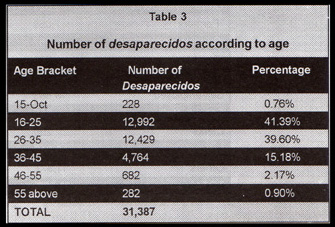
Unfortunately, the investigations were not without
controversy. As early as 1994, the PCID was severely criticized after it
was announced that the Commission was only mandated to investigate cases
that occurred after January 1, 1998 despite the fact that most
disappearances happened even before the PTA was promulgated in 1971.
Bowing to public pressure and the threat of foreign partners to withdraw
vital development aid, the Sri Lankan government formed the PCIIRP. The
new Commission, unfortunately, proved to be another toothless tiger
since it was authorized to probe disappearances that occurred after
January, 1991.
The government was also criticized for its seemingly
obnoxious compensation package. Under the previous UNP regime,
government employees received greater reparation than those outside of
the bureaucracy, with the former receiving between Rs. 75,000 to Rs.
150,000 as compared to the latter who only receive a measly sum of
around Rs. 15,000 to Rs. 50,000. Apparently, the package was made at the
neight of the government campaign against the JVP and the LTTE, with the
primary purpose of providing compensation to 6,000 UNP supporters.
To correct this imbalance, the Presidential Commission on Involuntary
Disappearances recommended that a uniform amount of Rs. 150,000 be paid
equally to spouse and children of the disappeared, with the widow
receiving Rs. 75,000 and the remaining balance to be shared by the
children. But the government decided to instead give the families a
monthly life allowance of Rs. 500. Though it has complemented its
compensation package by giving minor food allowance under the
Samurdih (Prosperity) Programme, government assistance remains
inadequate. More so, only 13,000 have been compensated so far.
But apart from government incompetence, the work has
also been hampered by the victims, own limitations. Living ,mostly in
rural communities amidst severe economic hardships, most victims find
little time for protest campaign and courtroom proceedings. Most of them
are also threatened and harassed by the culprits, thus dissuading some
of them from pursuing their cases. The UNP and the security forces have
also utilized their influence to create all sorts of legal impediments
and abort justice. Few lawyers are also interested in human rights
issues, preventing the victims and concerned NGOs from soliciting free
services.
What Now?
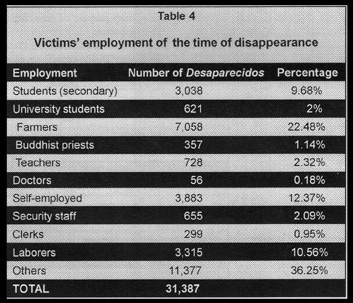
Seen from all angles, Sri Lanka's dubious human
rights record has surely become a moral dilemma. With 60,000 reported
cases, it has become the country with the largest volume of
disappearances - a title which is certainly no source of pride or honor.
The irony of it is that it occurred in a nation that takes pride in
having a recorded history spanning several millennia; and for a people
to achieve such a level of accomplishment, brutality is the very last
thing that could be expected from them.
To keep the Sri Lankan people from forgetting its
dreadful past, the Organization of Parents and Family Members of the
Disappeared (OPFMD) has declared April 4 as the National Day of
Disappeared Persons. Though this date has yet to be officially
recognized by the Sri Lankan government, the Organization intends to use
this yearly commemoration as a springboard to the on-going justice
campaign and a means to prevent such atrocities from recurring.
But fate would have it otherwise, and unless the
Tamil and the Singalese begin to settle their differences and exorcise
the monster that have ravaged their land, Sri Lanka will always be a
place of broken serendipity.

 Bled dry by protracted guerilla campaign, the
government of Sri Lanka sought the assistance of India then under the
leadership of Prime Minister Rajiv Gandhi. In July 198, the
Indo-Sri Lanka Accord took effect, allowing the entry of Indian troops
to take charge of security in the northeast. Labeled as the Indian
Peace-Keeping Force (IPKF), they were specifically created to disarm the
militants and end the military stalemate.
Bled dry by protracted guerilla campaign, the
government of Sri Lanka sought the assistance of India then under the
leadership of Prime Minister Rajiv Gandhi. In July 198, the
Indo-Sri Lanka Accord took effect, allowing the entry of Indian troops
to take charge of security in the northeast. Labeled as the Indian
Peace-Keeping Force (IPKF), they were specifically created to disarm the
militants and end the military stalemate.
 In August 1994, the People's Alliance (PA), a
coalition of parties under the SRFP, won the parliamentary elections
that ended the UNP's 17-year grip on power. Winning 105 of the total 225
seats, the PA forged an alliance with the Sri Lankan Muslim Congress and
other opposition parties enabling them to muster a majority of 113 seats
as opposed to the UNP's 94. In the presidential elections the following
November, PA leader Chandrika Bandaranaike Kumaratunga was elected as
the country's new Chief Executive.
In August 1994, the People's Alliance (PA), a
coalition of parties under the SRFP, won the parliamentary elections
that ended the UNP's 17-year grip on power. Winning 105 of the total 225
seats, the PA forged an alliance with the Sri Lankan Muslim Congress and
other opposition parties enabling them to muster a majority of 113 seats
as opposed to the UNP's 94. In the presidential elections the following
November, PA leader Chandrika Bandaranaike Kumaratunga was elected as
the country's new Chief Executive.
